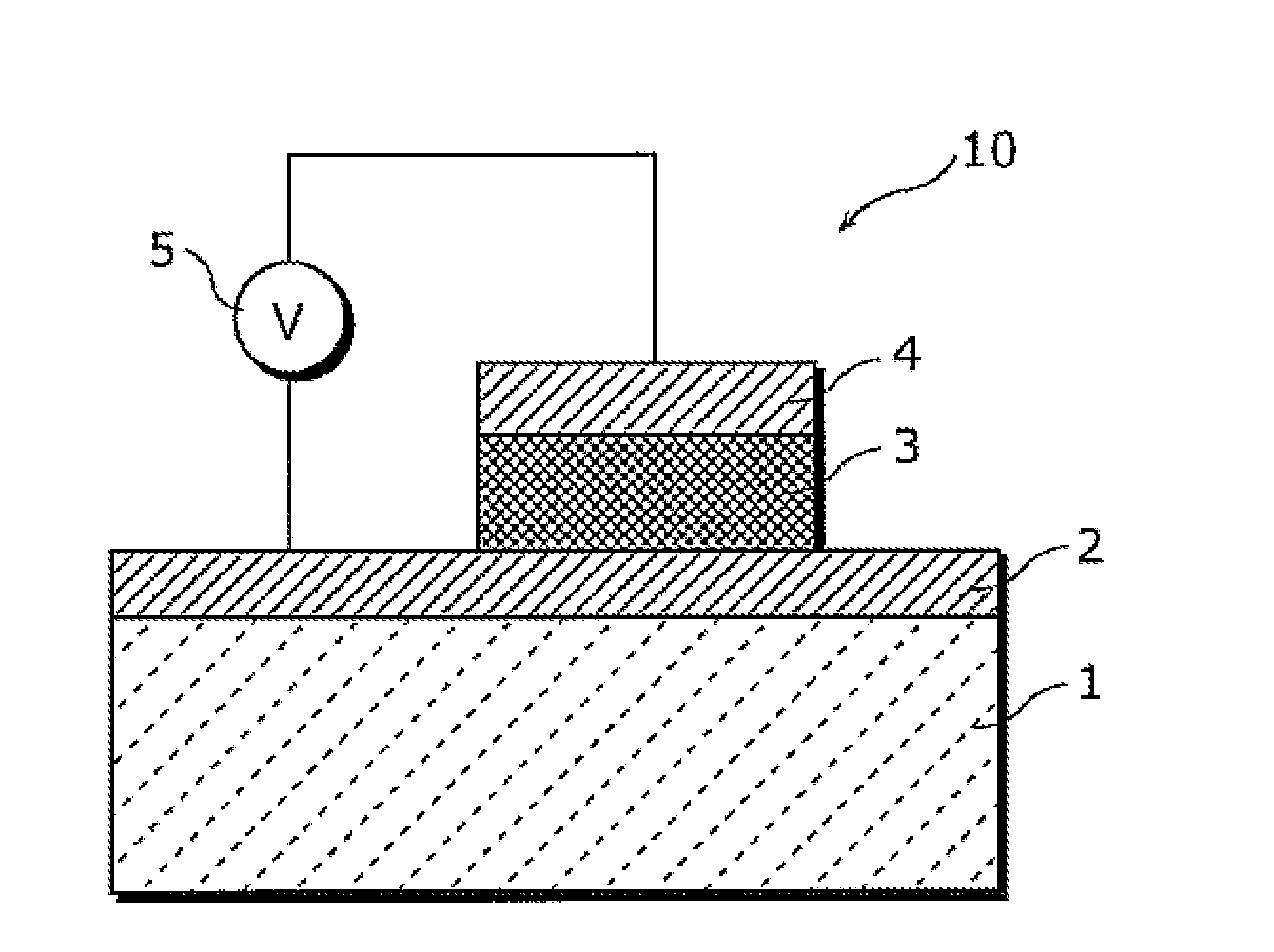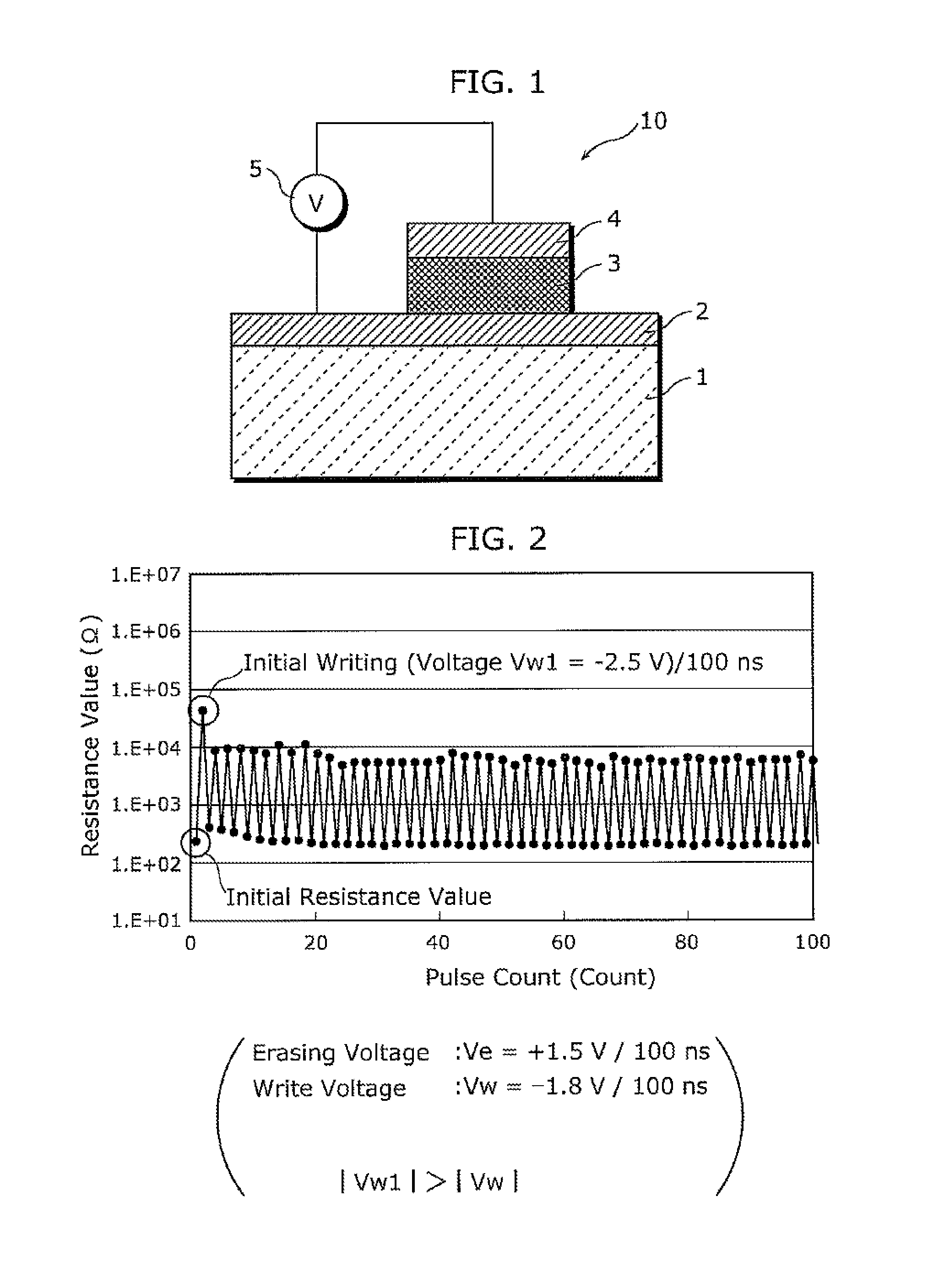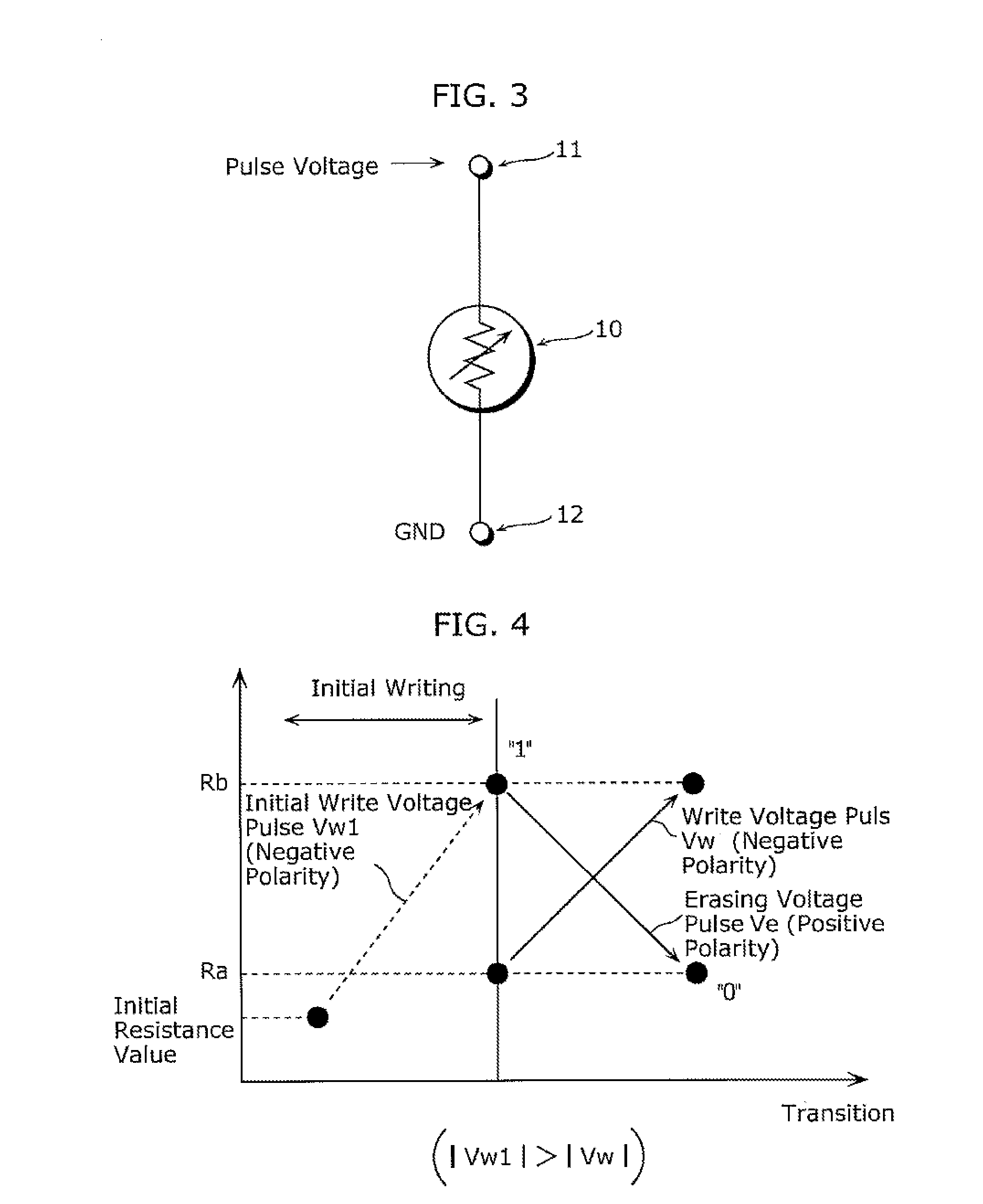Method of programming variable resistance element and variable resistance memory device using the same
a technology of variable resistance and memory device, which is applied in the direction of digital storage, semiconductor devices, instruments, etc., can solve the problems of limiting the current attempt at more microfabricated flash memory using floating gates to meet such requirements, and achieve stable and high-speed operations, high speed, and high speed
- Summary
- Abstract
- Description
- Claims
- Application Information
AI Technical Summary
Benefits of technology
Problems solved by technology
Method used
Image
Examples
first embodiment
Variation of First Embodiment
[0114]It should be noted that the voltage value Vw1 and the pulse width of the initial write voltage pulse, the voltage value Vw and the pulse width of the subsequent write voltage pulse, the voltage value Ve and the pulse width of the erasing voltage pulse, and the value of the readout voltage are not limited to the above-described values. They may be any values as far as a relationship between voltages satisfies |Vw1|>|Vw| and the values are suitable for variable resistance elements actually manufactured.
[0115]It is also possible that another layer is formed between the lower electrode 2 and the variable resistance layer 3 or between the variable resistance layer 3 and the upper electrode 4. The structure may be modified as far as the lower electrode 2 and the variable resistance layer 3 are electrically connected to each other and the variable resistance layer 3 and the upper electrode 4 are electrically connected to each other.
[0116]As described earl...
first example
[0119]On the silicon substrate, the lower electrode made of platinum (Pt) (with dimensions of 10 μm×10 μm) is formed by a sputtering method to have a thickness of 0.1 μm. Then, a Ta target is prepared, and oxygen gas is mixed to argon gas according to a predetermined ratio of flow rates so as to perform reactive sputtering for the Ta target. Thereby, the variable resistance layer 3 comprising a tantalum oxide represented by the chemical formula of TaOx is formed on the lower electrode 2. The variable resistance layer is manufactured at ambient temperature without heating the substrate, for example. Then, on the variable resistance layer, the upper electrode made of Pt is formed by a sputtering method to have a thickness of 0.1 μm. A mask and photolithography are used for etching the variable resistance layer and the upper electrode together. Thereby, the variable resistance element is manufactured. Each of the upper electrode and the variable resistance layer has dimensions of 0.5 μ...
second example
[0133]Most of variable resistance elements used in the first example show resistance variation with good endurance characteristics. However, there are exceptionally rare variable resistance elements that fail writing to change a low resistance state to a high resistance state. In order to solve the drawbacks, the second example includes a determination step for examining a resistance state of the variable resistance element 10 after writing, in addition to the processing in the first example. If writing fails, a re-write voltage pulse (with a voltage value Vw2) satisfying a relationship |Vw2|>|Vw| is applied to perform re-writing. Then, the general subsequent write voltage pulses (with the voltage value Vw) and the erasing voltage pulse (with the voltage value Ve) are applied.
[0134]FIG. 13 shows a variation of a resistance value of the variable resistance layer in the case where the voltage value Vw1 of the initial write voltage pulse is set to be −2.5V (with a pulse width of 100 ns...
PUM
 Login to View More
Login to View More Abstract
Description
Claims
Application Information
 Login to View More
Login to View More - R&D
- Intellectual Property
- Life Sciences
- Materials
- Tech Scout
- Unparalleled Data Quality
- Higher Quality Content
- 60% Fewer Hallucinations
Browse by: Latest US Patents, China's latest patents, Technical Efficacy Thesaurus, Application Domain, Technology Topic, Popular Technical Reports.
© 2025 PatSnap. All rights reserved.Legal|Privacy policy|Modern Slavery Act Transparency Statement|Sitemap|About US| Contact US: help@patsnap.com



